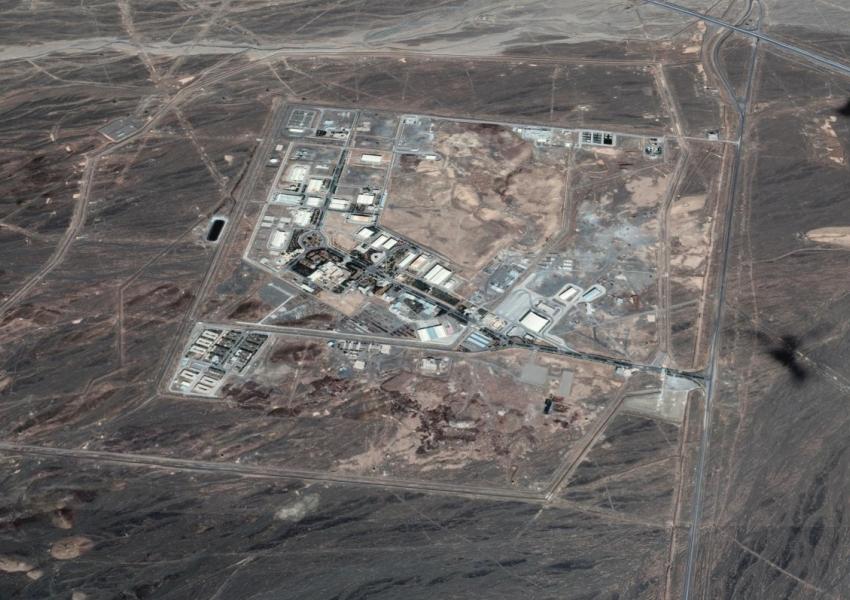Natanz Nuclear Facility Sabotage Raises Questions About Extent of Damage, Infiltration in Security Forces, Talks in Vienna As negotiations are underway in Vienna between Iran and European powers to restore the JCPOA, Iranian domestic sources on 11 April reported that an “incident” at the Natanz enrichment facility caused damage to the facility’s electrical system that affected the underground centrifuges. Officials have pointed fingers at Israel, and some accused the US of being complicit. Ruhani administration officials downplayed the event, saying that Iran would benefit by replacing the damaged centrifuges with more advanced ones. Other officials, however, have said that the damage was far more extensive. Some officials have raised concerns about compromised intelligence and security services. At the same time, hardliners and opponents of the nuclear deal attacked the Ruhani administration, calling on it to suspend Vienna talks and accused it of making Iran vulnerable to “infiltration.”
On 11 April, Behrouz Kamalvandi, spokesman for the Atomic Energy Organization of Iran (AEOI), announced that an “accident” had occurred at the electricity grid of the underground Natanz enrichment facility. He added that the incident did not result in any casualties or contamination. Later, officials and media labeled the attack “nuclear terrorism.” Top nuclear official, Ali-Akbar Salehi called the attack a “despicable” act that was meant to sabotage the nuclear talks, and Foreign Minister Javad Zarif called for revenge against Israel. (The Natanz incident occurred a day after Iran’s “Nuclear Day” and the announcement of the reconstruction of a “new generation centrifuge assembly center” at the facility. It also occurred less than a year after Iran accused Israel of detonating a bomb that destroyed that center)
Although Ruhani administration officials said that in the recent incident only the least efficient IR-1 centrifuges were damaged, other officials have said the damage was more extensive. Kamalvandi was hospitalized after reportedly visiting the site of the incident and falling more than 20 feet. According to Parliament Research Center Director Ali-Reza Zakani, some parliamentary members (MPs) were “crying blood” following an inspection of the damage to the facility. Zakani said that “several thousand centrifuges” and a “significant part of [Iran’s] enrichment capability” had been damaged and destroyed. He further criticized security forces for failing to detect “300 pounds of explosives” planted in a nuclear component that was taken “out of the country for repairs” and returned. Zakani added that in another, unspecified instance, explosive charges were also placed in an “office desk with sensitive instruments.” He decried that Iran has become “a heaven for spies.” Calling the sabotage operation plan “very beautiful,” Fereydoun Abbasi, former nuclear energy chief and current chairman of the Parliamentary Energy Committee, said the attack specifically targeted an electrical substation that distributed electricity about 40-50 meters underground, as well as the main cable that runs from a battery backup system.
Nour News, a news agency linked to the Supreme National Security Council Secretariat, cited an “informed Intelligence Ministry official” as saying that the individual responsible for the damage had been identified and efforts were underway to arrest the culprit. Without providing further details regarding the incident, Ruhani administration spokesman Ali Rabiei called the unnamed culprit a “traitor.” Thus far, there have been no further updates.
Echoing past concerns, Principlists, or those who have professed commitment to the principles of the 1979 Revolution, further accused the US and Israel of “infiltrating” the country and taking advantage of weaknesses in Iran’s security infrastructure in order to disrupt Iran’s nuclear activities. Mohsen Reza’i, former IRGC overall chief and current Expediency Council member, tweeted that a “fire” at Natanz less than a year after the “previous explosion” is an indication of the “seriousness of… infiltration” in the country. In a follow up statement, Reza’i lamented that “previously, our classified nuclear files were stolen,” referring to Israel’s exfiltration of top-secret nuclear files in 2018. Until now, Islamic Republic officials denied that nuclear files were stolen. Reza’i added that “some suspicious small aircraft also came and did something,” but this reference was not immediately clear. He stated that Tehran has faced two explosions and an assassination in less than a year, referring to the assassination of military commander and nuclear scientist Mohsen Fakhrizadeh and an earlier explosion in Natanz last year. Reza’i declared that “we have a security pollution,” that a “security cleansing” has not happened in 30 years, and that the “pollution” has worsened in the past decade. He called for the next presidential administration to “cleanse potential infiltrating sources.” Parliamentary Energy Committee member Malekpour Shari’ati-Niasar also pointed to “infiltration” and called the incident “very suspicious” and likely “[caused by] sabotage.” Shari’ati tweeted that the CIA and Mossad were responsible for the “sabotage,” which he said was carried out with the “knowledge” of US President Joe Biden.
In the wake of the incident, Tehran informed the International Atomic Energy Agency (IAEA) that it would increase uranium enrichment up to 60 percent at Natanz. A senior Foreign Ministry official declared that Iran would install 1,000 centrifuges with 50 percent more capacity on top of replacing damaged machines. In a letter addressed to the IAEA, Iran apparently confirmed that Israel destroyed a Syrian nuclear facility in 2007, which Damascus has denied. On 14 April, Supreme Leader Ali Khamene’i did not appear to publicly comment on the sabotage during a pre-planned speech. Pointing to the Vienna talks, he said, “Sanctions must be removed first. Once we are certain that has been done, we will carry out our commitments. This is because they have broken their promises tens of times, and it is the same now.”
Linking the incident to ongoing nuclear talks, Mashregh News, which is affiliated with the Islamic Revolutionary Guard Corps (IRGC), said that in conducting this “sabotage,” Israel is pursuing two goals: First, “to halt the technical advancement of Iran’s nuclear program and slow down uranium enrichment;” and second, to “send a message to the United States and Europe that if they do not take into account Iran’s demands”, Israel will “act in line with its goals and thus impose its interests on the negotiations.” The Reformist daily Sharq meanwhile, cited former diplomat Kirush Ahmadi as saying that Israel is seeking to “destroy the negotiations.”
Principlists and opponents of the nuclear deal also attacked the Ruhani administration’s efforts to lift sanctions and called for a halt to negotiations, while Ruhani administration officials rebuffed calls to end talks. In a tweet, Amir Abdollahian, special aide to the Majles speaker, addressed Kamalvandi and said: “The concurrence of the Vienna talks and the sabotage at Natanz cannot be deemed coincidental.” Abdollah Ganji, editor-in-chief of hardline daily Javan newspaper, tweeted that in response to the Natanz incident, Iran should leave the negotiations. Former negotiator Sa’id Jalili pointed specifically to paragraph 5 of the JCPOA, which he said obliged Iran to transfer its enrichment activities from the Fordow site to the less secure Natanz facility and led to the recent explosion. On the other hand, Presidential adviser Hesameddin Ashna, who downplayed the incident as merely an “electrical disturbance,” and asked whether it was worth responding to by “halting the Vienna talks,” received numerous reactions by hardline Twitter users who condemned him for his support of the ongoing nuclear negotiations. (Mehr News, IRNA, YJC, Khabar Online, Bahar News, Radio Farda, Tasnim News, Khabar Online, Nour News, Asr-e Iran, Twitter, Sharq, Ensaf News, Javan, Mashregh News)
Independent Iran analyst Diana Timmerman wrote this report. Resistance Axis Monitor Co-Founder Amir Toumaj contributed.





